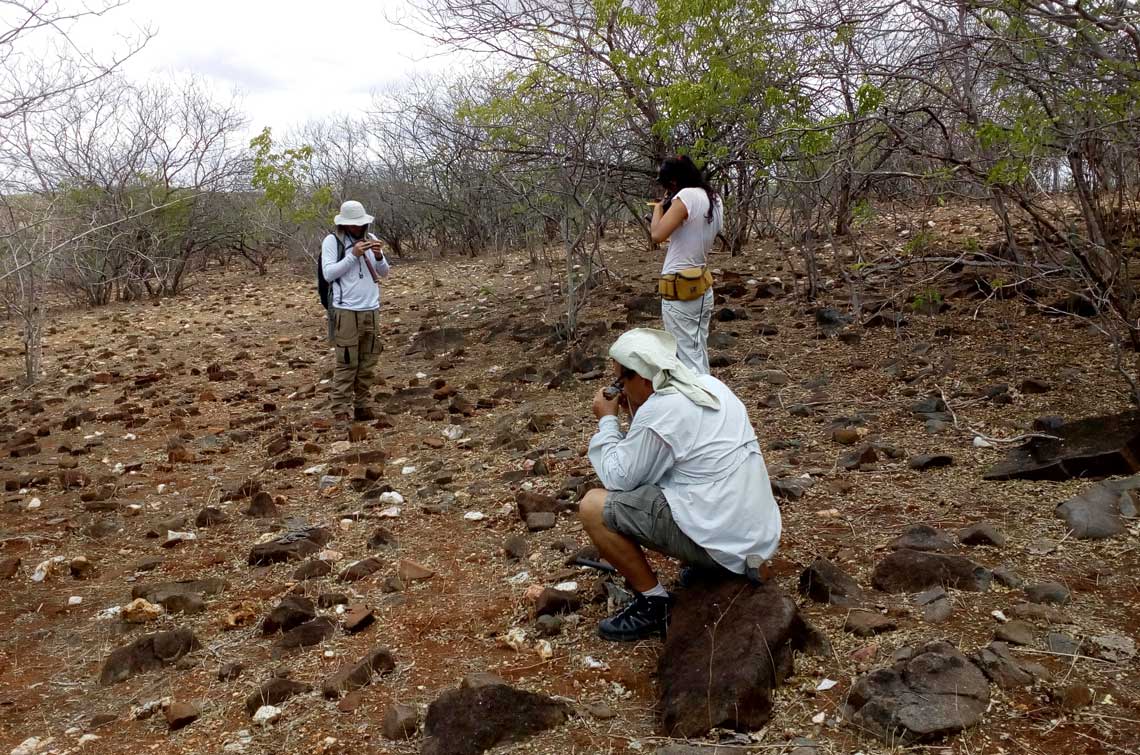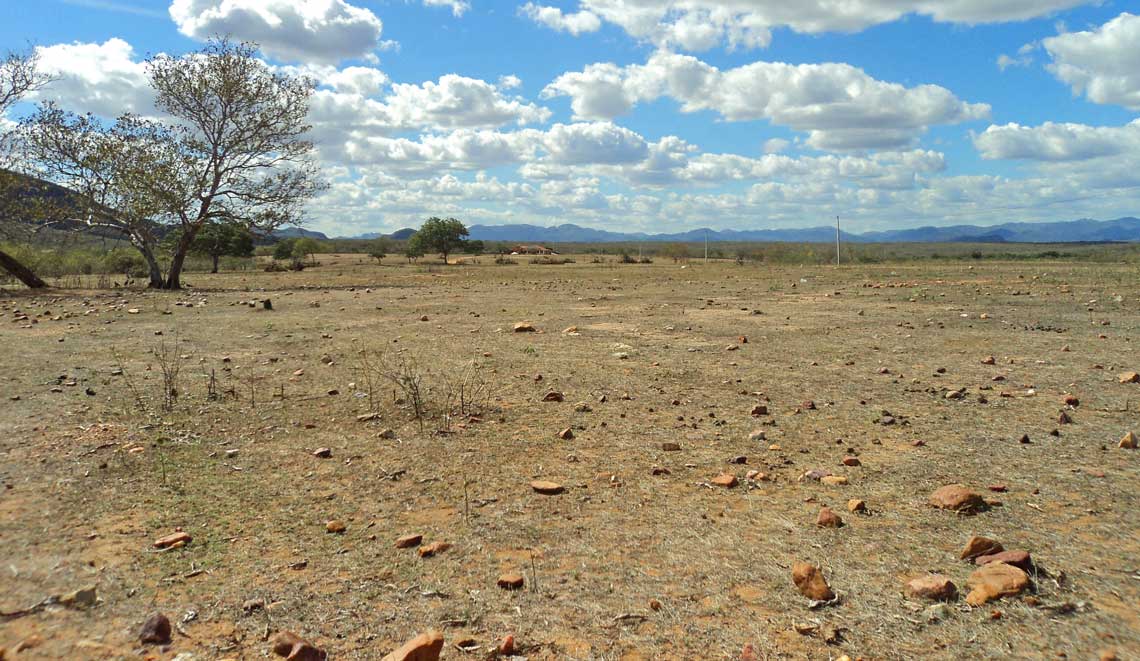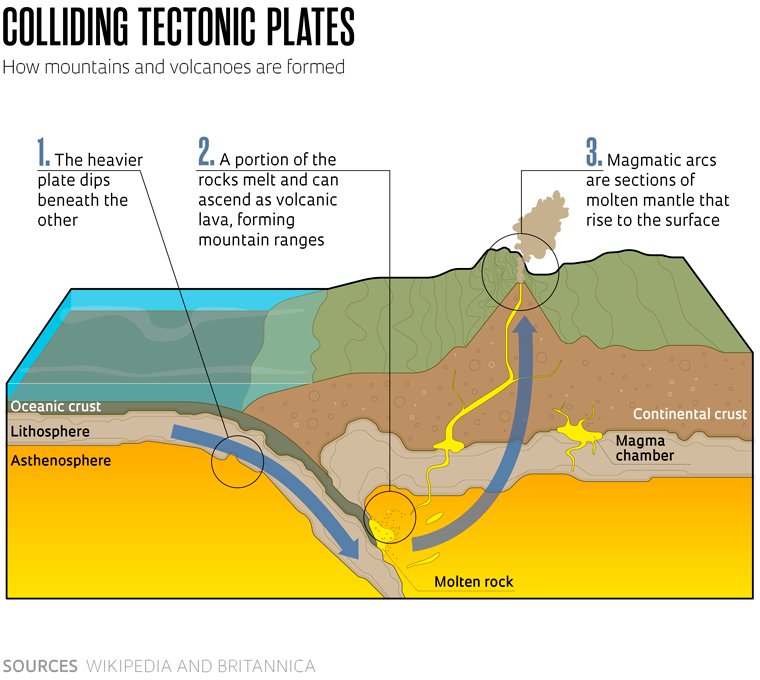In early April, when recounting a research project he had started 36 years ago to reconstruct the movements of large blocks in parts of Brazil’s Northeast and Midwest around 600 million years ago, geologist Ticiano dos Santos recalled a student from the Institute of Geology at the University of Campinas (IG-UNICAMP), Michele Pitarello, currently at the Geological Survey of Brazil in Manaus.
“In 2012, she spent months examining dozens of rock slides, which I had preselected, under optical and scanning electron microscopes,” Ticiano recalls, preferring to go by his first name. “She said, ‘If there’s coesite, I’ll find it.’”
Finally, in one of the cut and polished rock slides, with a thickness of 30 micrometers (1 micrometer is equivalent to 1 thousandth of a millimeter), she finally found micrometric grains of what she thought could be coesite — a mineral that forms at depths of around 90 kilometers (km) under an ultra-high pressure of 2.5 gigapascals, roughly 25 thousand times greater than sea-level pressure, in rocks known as eclogites. Coesite is quite rare because it typically transforms into quartz as it rises to shallower depths and pressure decreases.

Ticiano J. S. Santos / IG-UnicampA sample of rock subjected to ultra-high pressure, collected to the south of Irauçuba, where coesite was identifiedTiciano J. S. Santos / IG-Unicamp
More advanced instruments at IG-UNICAMP, the UNICAMP Institute of Physics, and the National Synchrotron Light Laboratory (LNLS), also in Campinas, confirmed the identity of the coesite, found embedded in a rock collected by Santos and his team in Forquilha, a municipality with a population of 25,000 people in eastern Ceará. Characterized with the assistance of geologists from the University of Brasília (UnB), the first coesite ever found in Ceará and Brazil was reported in October 2015 in the journal Gondwana Research.
For nearly a year during his master’s degree program, also supervised by Santos, geologist Matheus Ancelmi later surveyed and cataloged over 40 outcrops subjected to high pressure, but found no coesite. They then moved to an area in the municipality of Irauçuba, 70 km from Forquilha, and five years later, they found another sample of the rare mineral. This time the microscope analysis was tasked to Nádia Borges Gomes, who at the time was also pursuing a master’s degree under Santos.
“The coesite discovery was huge,” says Benjamin Bley, a geologist from the University of São Paulo’s Institute of Geosciences (IGc-USP), who was not involved in the research. “This, coupled with the discovery of eclogites, which are also quite rare, further bolsters research surrounding the geological connection between northeastern Brazil and northeastern Africa, regions that were once joined together.”

Ticiano J. S. Santos/IG-UnicampJoão Paulo Pitombeira, of UFPE, Nádia Borges, and Ticiano Santos (wearing shorts) selecting rocks and minerals in the Irauçuba area, CearáTiciano J. S. Santos/IG-Unicamp
Punctuating decades of geological research within the area, these two coesite discoveries have enabled researchers to reconstruct the formation of Ceará’s now-flat landscape — with only a few remaining mountain ranges, such as the Baturité range south of Fortaleza and the Maranguape range, closer to the state capital — and the complex movements of massive rock formations, often referred to as microplates. These formations collided, fragmented, or fused at different points in time, ultimately shaping the South American continent.
“Around 640 million years ago, the Forquilha region used to be a mountain range comparable to the much more recent Himalayas, which are still in the process of formation,” Ticiano remarks. He explains that this mountain range likely formed in a subduction zone [an area where two tectonic plates meet, with one sliding beneath the other] in an ancient ocean, as a result of the collision of two separate continents, one situated to the east of the city of Sobral, and the other to the west. “The rock formations in the western continent differ geologically from those in the eastern continent, with each aging around 2.3 billion and 2.1 billion years, respectively.
This means people living to the east and west of Sobral, in Ceará, can now say the areas where they live once belonged to separate continents.” Between these continents there was once an ocean called Goianides, which cut through Brazil in a northeast-southwest direction, as documented by researchers from UnB in the late 1990s. The perimeters of this ocean were flanked by mountain ranges roughly 600 million years ago.
Whenever one tectonic plate sinks beneath another, a portion of the rock within the magma melts and can emerge as volcanic lava, thereby forming mountains. “The mountains and volcanoes in the northern regions of Brazil’s Northeast and Midwest have been entirely eroded away,” explains Ticiano. “All that remains is the root of what we term the magmatic arc, essentially a stretch of magmatic rocks that rose to the surface.” These magmatic arcs — also known as volcanic arcs, so called because they create a shape resembling an arc when observed from above — are sections of molten mantle that rise to the surface. Due to erosion, only the foundations — or roots — of these structures have endured in Brazil.
Santos’s research first began in 1987 when he made his first trip through the Caatinga (semiarid scrublands) of northwestern Ceará in search of oceanic bedrock, during the final year of his geology studies at the Federal University of Rio Grande do Norte (UFRN) in Natal. He had set out to test a hypothesis put forth by two UFRN professors, Peter Hackspacker (1952–2021) and Reinaldo Petta, which postulated potential linkages between the rock formations in Ceará and Africa.


